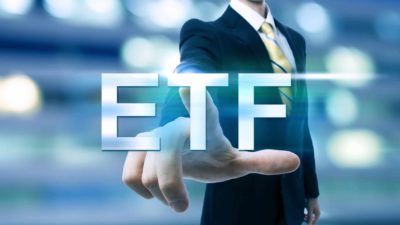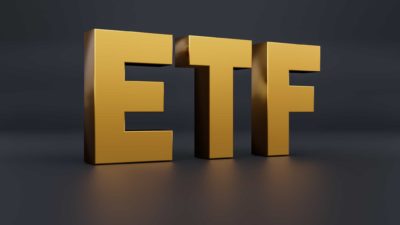The Vanguard Australian Shares Index ETF (ASX: VAS) is arguably the most popular exchange-traded fund (ETF) on the ASX.
But the BetaShares Australia 200 ETF (ASX: A200) is also popular, especially among retail investors.
The two ASX ETFs are similar in that they both track an index, providing broad-based exposure to Australian shares.
But there are some distinct differences. Let's take a look.
Underlying benchmark
The A200 aims to track the S&P/ASX 200 Index (ASX: XJO), the most prominent index on the ASX. The ASX 200 comprises the ASX's largest 200 companies, weighted in terms of market capitalisation.
In contrast, the VAS ETF aims to track the S&P/ASX 300 Index (ASX: XKO), which, as its name suggests, comprises the top 300 companies.
Holdings and weightings
Since these two ASX ETFs have different benchmarks, they also have different holdings and weightings.
Naturally, the VAS ETF has around 300 holdings, while the A200 ETF has 200.
But since both of these indices are weighted in terms of market capitalisation, they mirror each other more closely than I thought.
Both ETFs share the same top 10 holdings in identical order, with very similar weightings, as shown below.
| VAS ETF weightings | A200 ETF weightings | |
| BHP Group Ltd (ASX: BHP) | 9.9% | 9.8% |
| Commonwealth Bank of Australia (ASX: CBA) | 7.8% | 8.0% |
| CSL Limited (ASX: CSL) | 6.9% | 7.1% |
| National Australia Bank Ltd (ASX: NAB) | 4.6% | 4.7% |
| Westpac Banking Corp (ASX: WBC) | 3.7% | 3.7% |
| Australia and New Zealand Banking Group Ltd (ASX: ANZ) | 3.4% | 3.5% |
| Woodside Energy Group (ASX: WDS) | 3.0% | 3.1% |
| Macquarie Group Ltd (ASX: MQG) | 2.8% | 2.9% |
| Wesfarmers Ltd (ASX: WES) | 2.5% | 2.5% |
| Telstra Corporation Ltd (ASX: TLS) | 2.3% | 2.3% |
Sector exposure is also very similar across these two ASX ETFs, with some minute differences. You can check it out for yourself below.
| VAS ETF weightings | A200 ETF weightings | |
| Financials | 28.0% | 28.9% |
| Materials | 23.5% | 23.1% |
| Healthcare | 10.5% | 10.6% |
| Consumer discretionary | 6.5% | 6.3% |
| Energy | 6.3% | 6.3% |
| Real estate | 6.0% | 6.2% |
| Industrials | 6.0% | 5.8% |
| Consumer staples | 5.0% | 4.9% |
| Communication services | 3.9% | 3.9% |
| Other | 4.3% | 3.8% |
VAS wins on popularity
The VAS ETF had a whopping $10.8 billion invested in it at the end of September. This makes VAS the largest ETF on the ASX by a country mile.
Vanguard also offers this product in the form of a retail fund and a wholesale fund. So in total, this strategy ended the month with assets under management of $26.6 billion.
The A200 ETF is a minnow in comparison but it's BetaShares' largest ASX ETF, slightly edging out the BetaShares Nasdaq 100 ETF (ASX: NDQ). At the end of September, A200 had net assets of $2.4 billion.
The ASX's monthly investment products update shows that the VAS ETF enjoyed $242 million of net inflows during September. Meanwhile, the A200 ETF brought in $72 million of net flows.
A200 takes the cake on fees
The VAS ETF incurs yearly management fees of 0.10%. So, A200 takes the cake here with annual fees of 0.07%.
Based on a $10,000 investment, this would spin up fees of $10 and $7, respectively.
As I've discussed previously, fees compound over time and can eat into investment returns. But given that we're dealing with very small differences here, the effect isn't nearly as pronounced.
To demonstrate, let's use $50,000 portfolios earning annual returns of 7%. One invests in VAS and the other invests in A200. After 25 years, the VAS portfolio would be worth around $215,000, while the A200 portfolio would be worth roughly $230,000.
But this hypothetical example assumes both ETFs have identical returns, which certainly isn't the case…
Which ASX ETF has performed better?
So, last but not least, let's take a look at how the VAS ETF has performed compared to the A200 ETF.
It would be remiss of me not to mention that past performance is not a reliable indicator of future performance. But in my mind, it's still valuable insight.
In the last year, the VAS ETF has dropped 7.94% while A200 has fared slightly better, sliding by 7.21%.
Zooming out across the last three years, VAS has delivered an average annual return of 2.81%, again slightly lagging A200, which has achieved an average annual return of 2.92%.
Over the last five years, VAS has served up an average return of 6.83% per annum. Given that the A200 ETF was launched in 2018, it doesn't have a five-year track record. However, its benchmark ASX 200 index has averaged a return of 7.00% per annum over the last five years.
So, the A200 ETF appears to have historically performed slightly better than the VAS ETF.
Personally, I think both of these ASX ETFs are top choices for an investment portfolio. However, given their similarities, I'd be choosing one or the other, not both.









